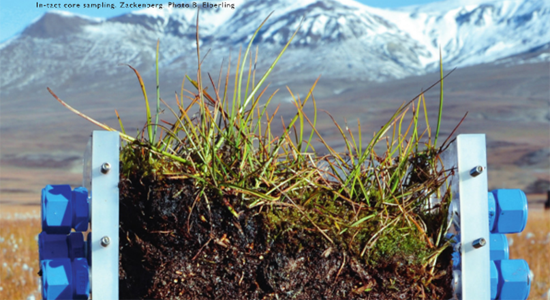Soil Biodiversity and function
 Soils form the foundations for plant life, including crops. Soils also contain the majority of known and unknown microbial life. Nowhere else is life so complex – and so challenging to study.
Soils form the foundations for plant life, including crops. Soils also contain the majority of known and unknown microbial life. Nowhere else is life so complex – and so challenging to study.
Our research focusses on globally important soil systems, mainly Arctic permafrost soils, arable soils in temperate regions, and soils in deserts and other drylands. The bacteria and fungi in these soils have profound impact on not only plant productivity, but also the emission of carbon dioxide and other greenhouse gases to the atmosphere. We combine DNA- and RNA-based techniques with measurements of greenhouse production and consumption to understand the responses of microbial activity to climate change and its importance for future plant productivity. Our experimental approaches involve e.g. thawing of permafrost soil under controlled conditions in the laboratory, drying and/or wetting of drought-prone soils, and ecosystem manipulations in Greenland mimicking future climate change in the Arctic; the latter done under the banner of Center for Permafrost (www.CENPERM.ku.dk), a Center of Excellence financed by the Danish National Research Foundation.
Write a project on Soil biodiversity and function
Microbiology of thawing permafrost
Due to global warming permafrost is thawing. This increases microbial decomposition of the enormous stocks of organic material and increases emission of greenhouse gases. You may investigate how bacteria and fungi react to extremely low temperatures or to global change experiments in the field.
A project may include:
Assays for enzymes involved in production or
consumption of greenhouse gases
PCR amplicons
Sequencing (only masters)
(Meta)transcriptomics (only masters)
Keywords: Biodiversity, climate change, bacterial activity
Supervisor: Anders Priemé
Email: aprieme@bio.ku.dk
Section of Microbiology
 Where No Idea Is TOO small
Where No Idea Is TOO small
Contact
 Professor
Professor
Anders Priemé
Universitetsparken 15
Building 1, 1st floor
DK-2100 Copenhagen
Email: aprieme@bio.ku.dk
